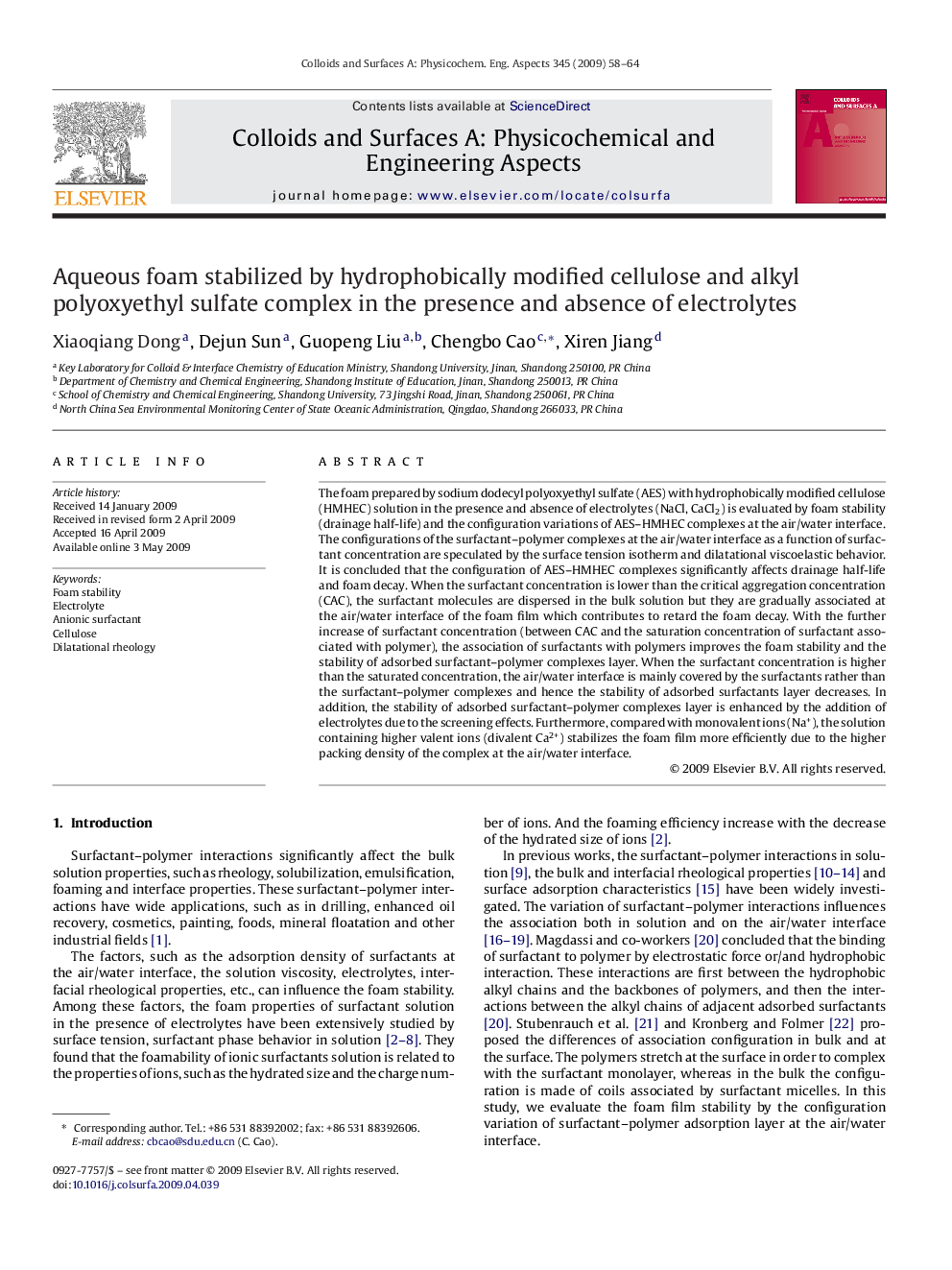| Article ID | Journal | Published Year | Pages | File Type |
|---|---|---|---|---|
| 595793 | Colloids and Surfaces A: Physicochemical and Engineering Aspects | 2009 | 7 Pages |
The foam prepared by sodium dodecyl polyoxyethyl sulfate (AES) with hydrophobically modified cellulose (HMHEC) solution in the presence and absence of electrolytes (NaCl, CaCl2) is evaluated by foam stability (drainage half-life) and the configuration variations of AES–HMHEC complexes at the air/water interface. The configurations of the surfactant–polymer complexes at the air/water interface as a function of surfactant concentration are speculated by the surface tension isotherm and dilatational viscoelastic behavior. It is concluded that the configuration of AES–HMHEC complexes significantly affects drainage half-life and foam decay. When the surfactant concentration is lower than the critical aggregation concentration (CAC), the surfactant molecules are dispersed in the bulk solution but they are gradually associated at the air/water interface of the foam film which contributes to retard the foam decay. With the further increase of surfactant concentration (between CAC and the saturation concentration of surfactant associated with polymer), the association of surfactants with polymers improves the foam stability and the stability of adsorbed surfactant–polymer complexes layer. When the surfactant concentration is higher than the saturated concentration, the air/water interface is mainly covered by the surfactants rather than the surfactant–polymer complexes and hence the stability of adsorbed surfactants layer decreases. In addition, the stability of adsorbed surfactant–polymer complexes layer is enhanced by the addition of electrolytes due to the screening effects. Furthermore, compared with monovalent ions (Na+), the solution containing higher valent ions (divalent Ca2+) stabilizes the foam film more efficiently due to the higher packing density of the complex at the air/water interface.
